Blue Zone Dining: The Longevity Secret Reshaping Global Menus
From Nicoya to New York, chefs are translating the world’s longest-living food traditions into vibrant, modern menus, and diners are hungry for more.
5 September 2025
Share this exclusive content from Saladplate

Blue zone diets comprise a large amount of beans, lentils, whole grains and leafy greens | Photo credit: Stock Image
What if the secret to living longer wasn’t locked away in a lab or a bottle of supplements, but simmering in a humble pot of beans, or tucked inside a nixtamalized corn tortilla?
Across the globe, a growing number of chefs are looking to the world’s so-called “Blue Zones”: five regions known for the longevity and health of their populations, to inspire a new wave of mindful eating. But this isn’t just a diet trend.
It’s a cultural shift, bringing traditional, nutrient-dense, and community-centred foods to the heart of the modern plate.
What Are Blue Zone Diets?
Coined by National Geographic Fellow Dan Buettner, the term “Blue Zones” refers to five regions: Okinawa, Japan; Ikaria, Greece; Nicoya, Costa Rica; Sardinia, Italy; and Loma Linda, California, USA. Despite vast geographic and cultural differences, these areas share one striking trait: unusually high numbers of centenarians living vibrant, active lives.
Their secret? Much of it comes down to food.
Blue Zone diets are plant-forward, minimally processed, and deeply rooted in cultural tradition. Staples include beans, lentils, whole grains, leafy greens, fermented foods, and seasonal produce. Meat is eaten sparingly, if at all, and processed snacks and sugary drinks are virtually absent.
But just as important as what they eat is how they eat: slowly, socially, and with a sense of purpose and ritual.


Chef Mario Buccellati is known for his plant-based cuisine | Photo credit: Mario Buccellati
“What fascinates me about Blue Zone cultures is how food is woven into the rhythm of daily life,” says Chef Mario Buccellati, an Italian American chef known for his vibrant plant-based cuisine and immersive dining series, The Eight Eat Experience. A finalist on Food Network’s Chopped, Mario has trained in Tuscany, worked at celebrated Manhattan restaurants like Dirt Candy and Avant Garden, and served as Chef de Cuisine for New York’s premier vegan group,
City Roots Hospitality. Most recently, he co-led a Blue Zone-inspired dinner in Brooklyn that brought the Nicoyan philosophy of food and longevity to life.
A Global Movement, One Plate at A Time
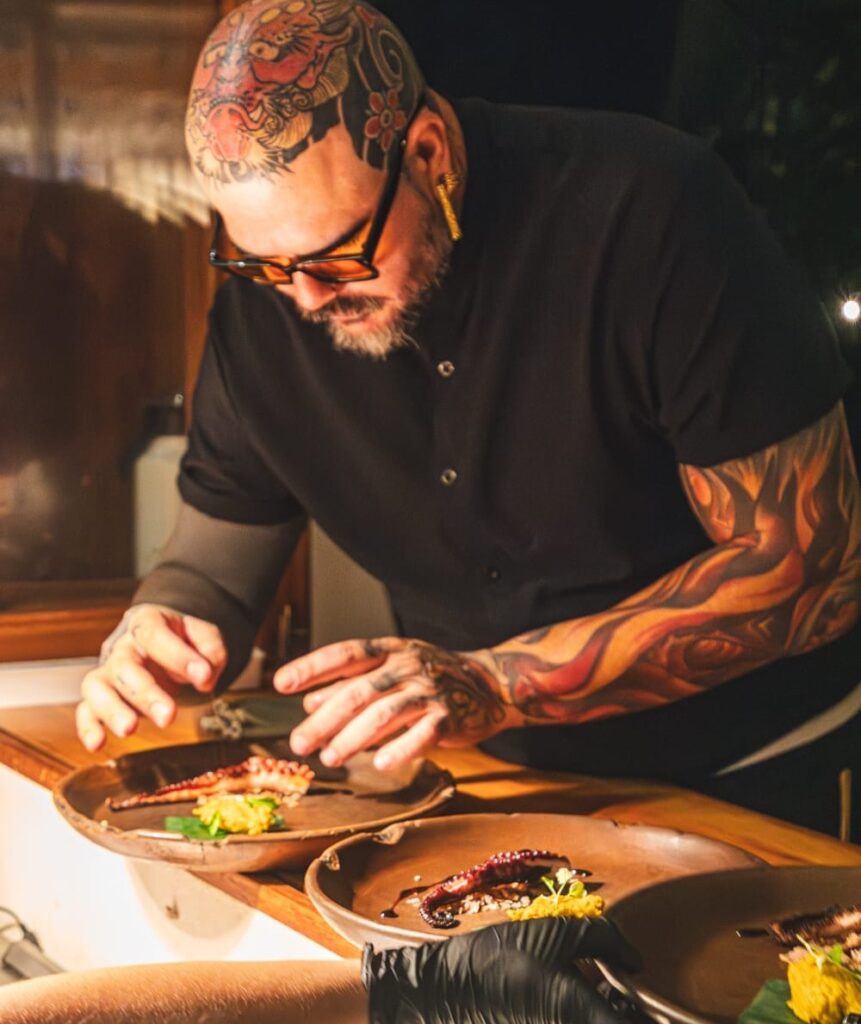

Chef Paulo Valerios of Huacas Restaurant | Photo credit: Huacas Restaurant
From Brooklyn to Barcelona, the influence of Blue Zone philosophies is showing up on more menus than ever, not as
a gimmick, but as a thoughtful return to food that nourishes, sustains, and celebrates tradition.
Earlier this year, Le Petit Monstre in Brooklyn hosted a sold-out, 8-course Nicoya-inspired dinner collaboratively curated by a trio of renowned chefs: Mario Buccellati, Paulo Valerios, and Zsuzsi Barta.
Valerios, Executive Chef of Huacas Restaurant in Costa Rica’s Guanacaste region is known for preserving his country’s culinary heritage through dishes inspired by local grandmothers and ancestral ingredients. Barta, a Budapest-born, New York-based chef and founder of Earthly Kitchen, brings a molecular and artistic approach to plant-based dining, with a global career spanning restaurants, product development, and culinary education.

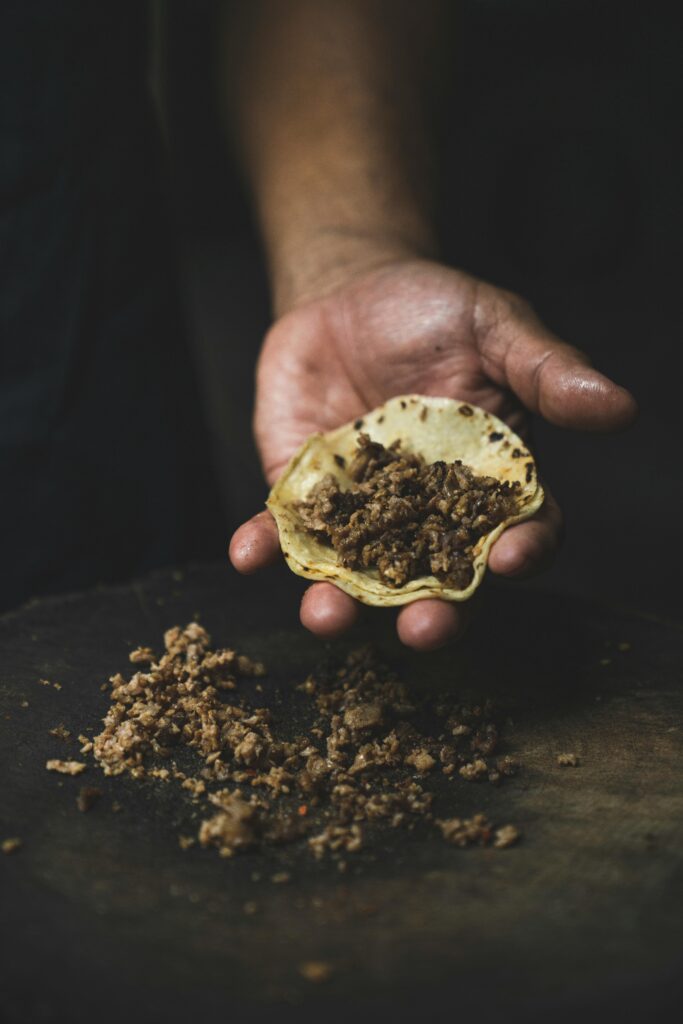
Nixamalised Corn Tortilla | Photo credit: Stock Image
Dishes ranged from Tortilla Nicoyana with cashew natilla to Arroz de Maiz, featuring corn milk and pickled bananas, each rooted in the foods that have sustained Costa Rica’s longest-living population for generations.
The full menu included standout plates like Mirepoix Nicoyano, crispy cilantro coyote paired with dehydrated sweet chilli mayo and roasted onions; Arroz Guacho, an achiote-braised lion’s mane mushroom with smoked hearts of palm and miso-kombu stock; and Picadillo de Papaya, a refreshing blend of green papaya, roasted maitake, and Congo pepper mayo, topped with crispy chicharrón de arroz.
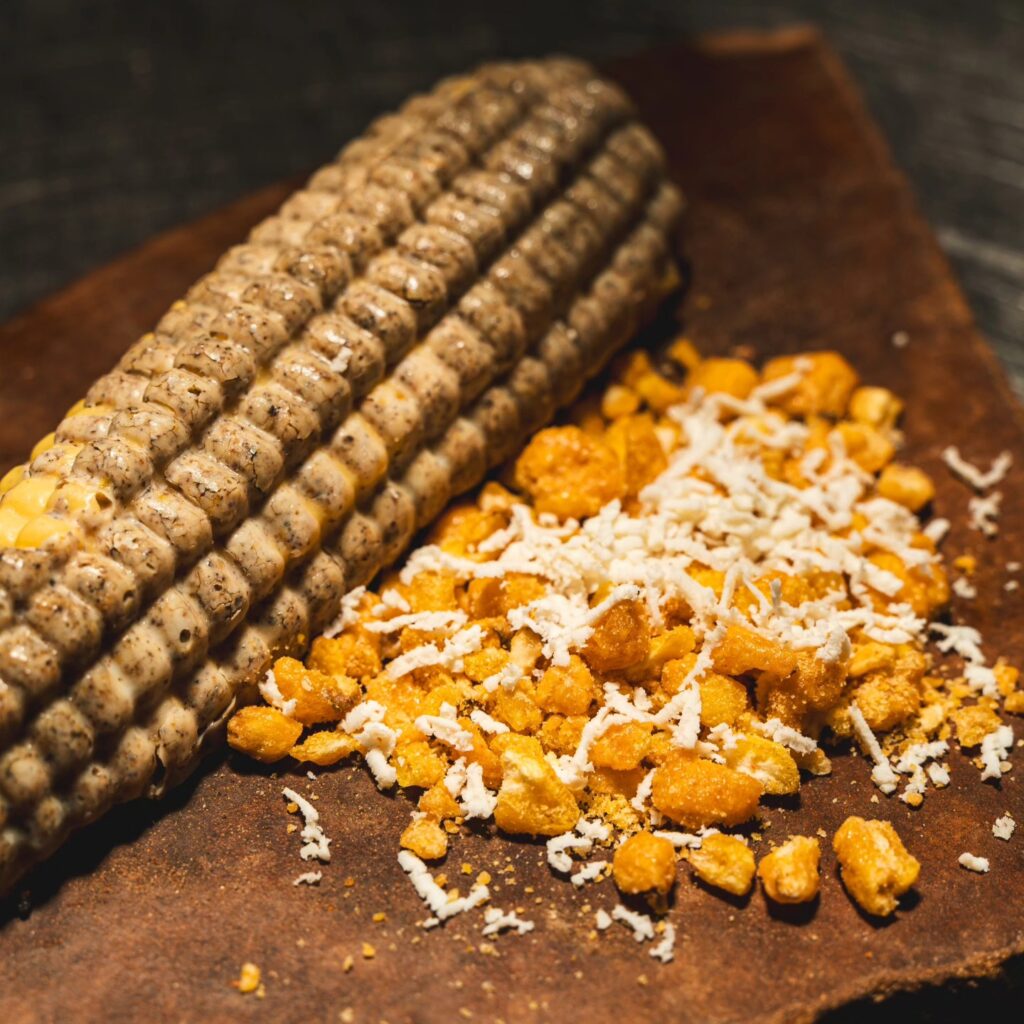
Corn Rice | Photo credit: Huacas Restaurant
The dessert course, Postre Nicoyano, offered a delicate smoked aged cashew bagaces, sweet corn namelaka, vanilla corn cake, white chocolate, maple tuile, and toasted corn, delivering a perfect balance of tradition and innovation.
“This wasn’t just a tasting menu,” explains the chef trio. “It was a story told through food; about how simplicity, fermentation, and ancestral ingredients can shape a culture’s health and identity.”
Chefs Shaping the Future of Food
Valerios is on a mission to preserve and elevate Costa Rica’s culinary identity. He draws inspiration from indigenous ingredients like culantro coyote, tacaco, and ají congo chiles, often recreating the wisdom of Costa Rican grandmothers through refined techniques. His book Abuelas de Costa Rica and work at Huacas Restaurant both aim
to protect a rich, disappearing culinary heritage.
“Fresh beans, corn, wild fruits, family meals – these are the true superfoods,” Valerios says. “We don’t need to reinvent the wheel. We just need to protect and celebrate what we already have.”
Barta, on the other hand, has been immersed in plant-based cuisine for over a decade, starting with intimate home dinners in Budapest and expanding to executive chef roles in Costa Rica and New York City. Her signature style blends science, sustainability, and art, combining fermentation, pastry, and handcrafted vegan cheeses into elevated dining experiences.

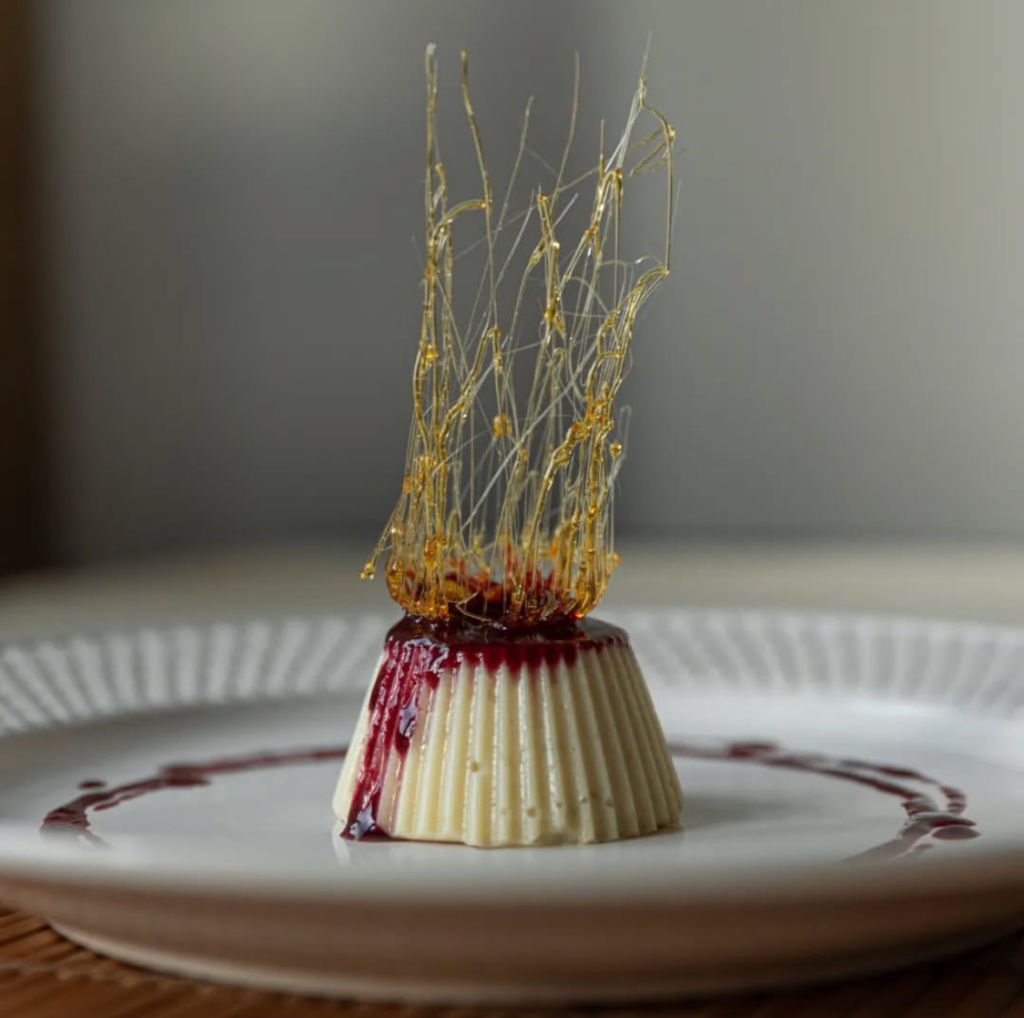
Chef Zsuzsi Barta specialises in fermentation and innovative plant-based cooking | Photo credit: Zsuzsi Barta
“There’s a special kind of wisdom in these food cultures, they’re not trend-driven,” Barta notes. “They’re community driven. We’re now seeing a revival of those values in urban kitchens worldwide.”
Buccellati, founder of The Eight Eat Experience and Creative Director of Inoculated Farms, continues to spotlight mushrooms and plants in multisensory formats. His culinary philosophy celebrates slow, immersive meals that build community, just like in the Blue Zones.
From Fine Dining to Family Restaurants
While the Blue Zone trend is gaining traction in haute cuisine, it’s also being embraced by community restaurants working with the Blue Zones Project, a global initiative that helps businesses and municipalities integrate longevity principles into everyday life.

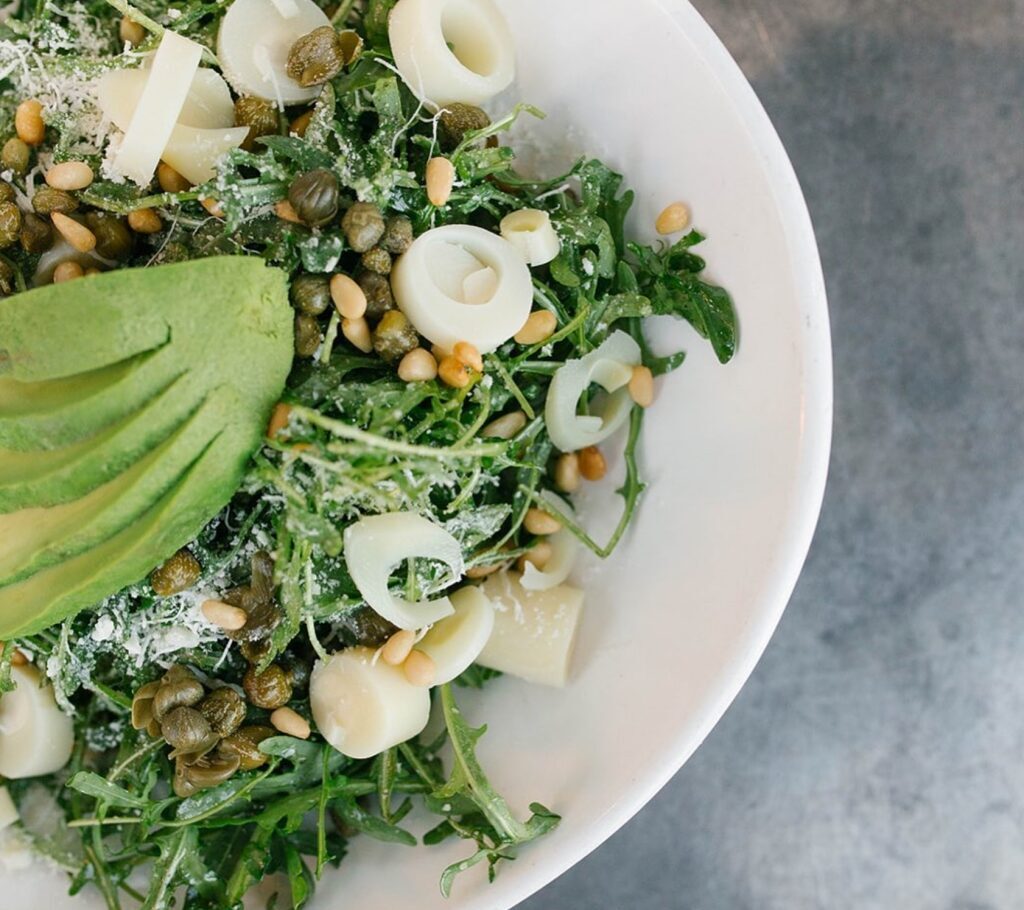
Plant-forward dishes from Bettolino Kitchen | Photo credit: Bettolino Kitchen
At Bettolino Kitchen in Redondo Beach, California, being a Blue Zones Project Approved restaurant means more than just offering salads. Their “Greens Menu” highlights plant-forward entrees, whole-grain sides like farro and quinoa, and even a nod to “Wine@Five”, celebrating moderate wine intake as part of a balanced life.
“Surrounding yourself with loved ones, eating fresh food, and enjoying a glass of wine, these aren’t trends,”
says Chef Stefania Masi. “They’re lifestyle choices that can add years to life.”
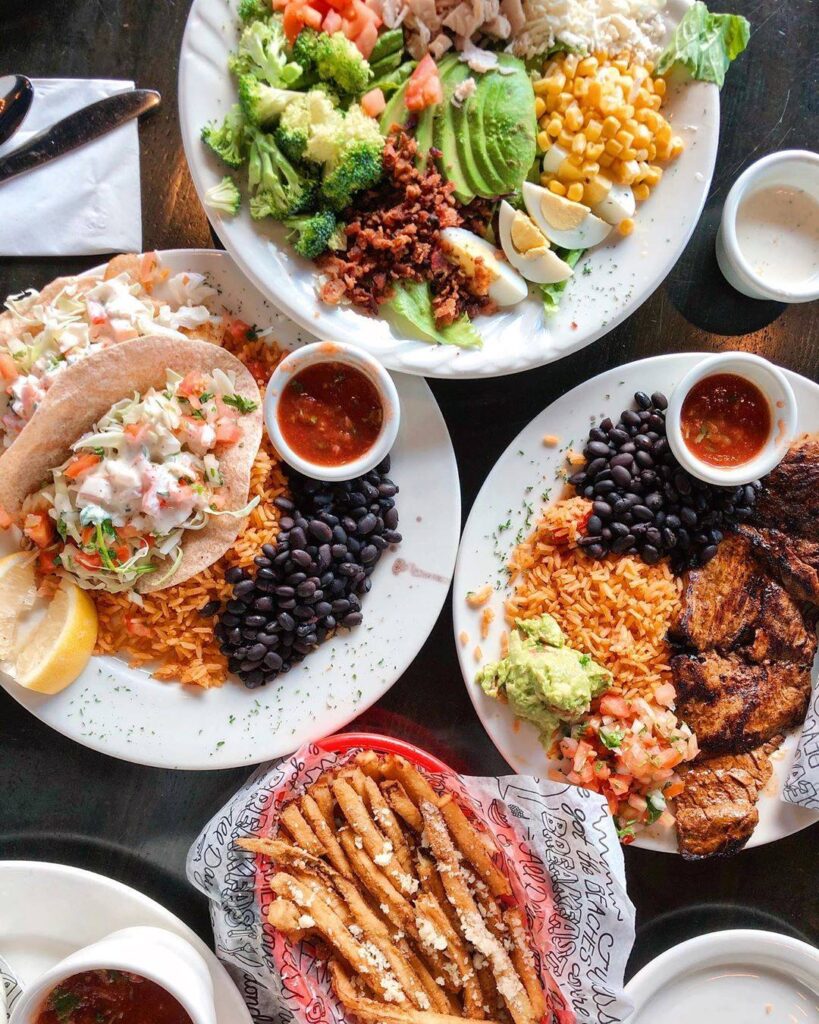
Photo credit: Good Stuff Restaurants
Good Stuff Restaurants, also in California, created a “16 Under 600” fitness menu rooted in Blue Zones principles. “When we became a Blue Zones Project Approved Restaurant,” says President Cris Bennett, “we weren’t just checking boxes, we were responding to real customer demand for food that’s nourishing without compromising on taste.”
Ingredients That Tell a Story
Beyond the dishes themselves, Blue Zone-inspired restaurants often emphasize local sourcing, sustainability, and seasonality, echoing the practices of their namesake regions. This not only reduces environmental impact but strengthens the connection between diners and the land, a key component of Blue Zone philosophies.
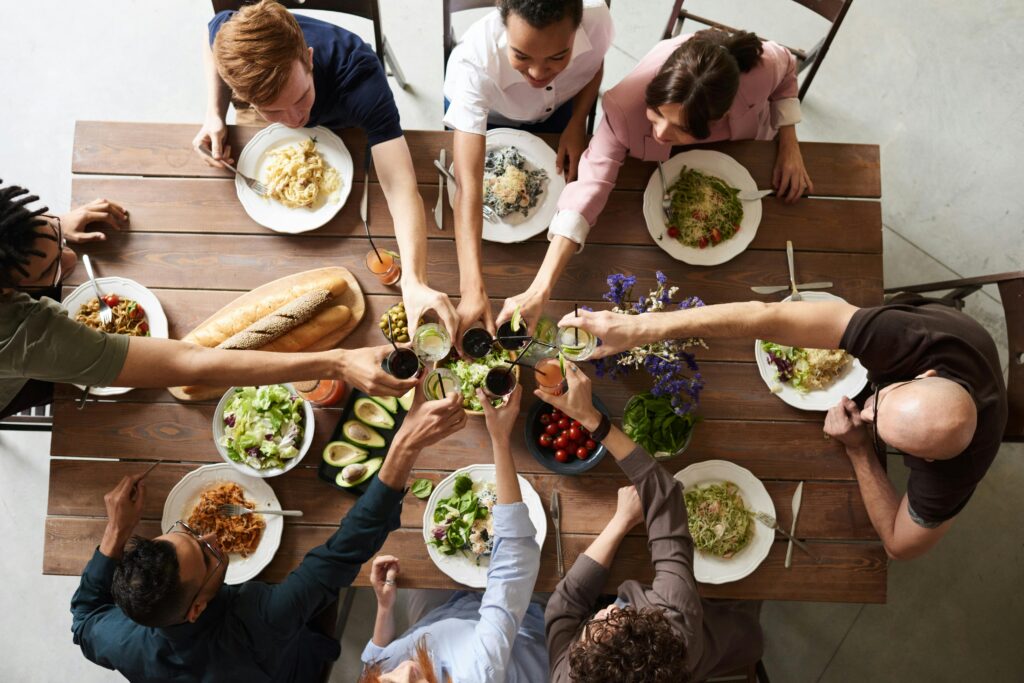
Blue Zones emphasize the community aspect of dining, where shared meals foster strong bonds and a mindful eating experience |
Photo credit: Stock Image
“In Sardinia, people don’t talk about ‘farm to table’, it just is,” notes Chef Barta. “There’s beauty in returning to food systems that nourish people and planet at the same time.”
Why This Matters
As climate change, food insecurity, and chronic disease continue to challenge our global food systems, the Blue Zone model offers a powerful alternative. These diets are low-impact, accessible, and community-centric, and unlike many wellness trends, they’re backed by decades of lived experience.
In the words of Chef Valerios: “If we want to design the future of food, we need to listen to the past. Blue Zones aren’t just places on a map; they’re blueprints for how to live well.”
Looking Ahead
Expect to see more chefs exploring the culinary traditions of longevity regions, not just as novelty, but as a design principle for food that nourishes both people and planet. From hotel menus to meal delivery kits, the Blue Zone ethos is finding new audiences who crave more than just flavour, they want meaning, too.
Whether it’s a slow-cooked bean stew in a Nicoyan village or a reimagined empanada in New York, the message is clear: Longevity begins with what’s on your plate, and who’s at your table.
Author: Michelle Yee
A content and communications professional, Michelle spent more than a decade creating content for several leading media titles including Lonely Planet Asia, Yahoo Singapore, and Wine & Dine. After leaving the media industry in 2019, she has been honing her craft at a global communications agency where she helps develop and drive publicity campaigns for brands in the consumer and corporate sectors.



